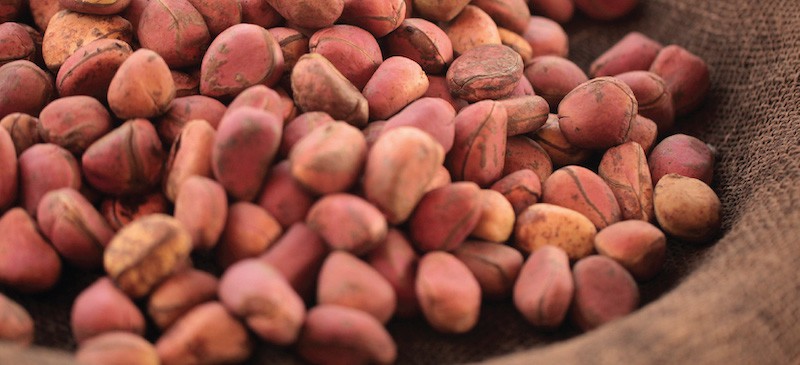This Dr. Axe content is medically reviewed or fact checked to ensure factually accurate information.
With strict editorial sourcing guidelines, we only link to academic research institutions, reputable media sites and, when research is available, medically peer-reviewed studies. Note that the numbers in parentheses (1, 2, etc.) are clickable links to these studies.
The information in our articles is NOT intended to replace a one-on-one relationship with a qualified health care professional and is not intended as medical advice.
This article is based on scientific evidence, written by experts and fact checked by our trained editorial staff. Note that the numbers in parentheses (1, 2, etc.) are clickable links to medically peer-reviewed studies.
Our team includes licensed nutritionists and dietitians, certified health education specialists, as well as certified strength and conditioning specialists, personal trainers and corrective exercise specialists. Our team aims to be not only thorough with its research, but also objective and unbiased.
The information in our articles is NOT intended to replace a one-on-one relationship with a qualified health care professional and is not intended as medical advice.
Kola Nut: The Little-Known Ingredient that Supports Energy Levels
March 5, 2020

Although few people have ever heard of the kola nut, it’s a common ingredient found in everything from soft drinks to herbal supplements. Not only does this nutritious nut boast a unique flavor and aroma, but it’s also brimming with caffeine as well.
In fact, each pod packs the equivalent caffeine content of about two cups of coffee nutrition, along with a host of antioxidants and other health-promoting compounds.
Ready to learn more? Keep reading for everything you need to know about the kola nut, including its benefits, side effects and potential uses.
What Is the Kola Nut?
The kola nut, sometimes also called the cola nut, is a type of edible nut that comes from the kola tree, which is native to West Africa. These trees can grow up to 60 feet tall and are notable for their vibrant yellow flowers and star-shaped fruits, each of which contains two to five kola nuts.
These healthy nuts are high in caffeine and often used as an herbal supplement and natural food flavoring. The kola nut taste is initially very bitter, but it becomes sweeter when chewed.
The nuts can be dried, giving them a much more mild flavor and nutmeg-like aroma.
Keep in mind that the kola nut should not be confused with gotu kola or bitter kola, also known as Garcinia kola.
Like the kola nut, these two plants are known for their medicinal properties and have been used to treat a variety of ailments. However, despite having a similar name, they are unrelated and belong to completely different species of plants.
Types/Varieties
Kola nuts are very common throughout West Africa and often consumed fresh or dried for a quick burst of caffeine. Red and white kola are the two main varieties, each of which is produced by the same plant species and sometimes even found within the same pod.
These nuts also play a central role in many cultures and traditions. In a kola nut Igbo ceremony, for example, the nut is presented to welcome visitors and used to symbolize peace and goodwill.
In other parts of the world, kola nut extract and kola nut powder are much more common than the fresh nut itself. These ingredients are found in many sodas, energy drinks, weight loss drugs and herbal supplements.
In addition to bumping up the caffeine content of these products, they also provide a unique taste and aroma.
Health Benefits
Rich in caffeine, theobromine and disease-fighting antioxidants, the kola nut has been linked to a number of powerful benefits. Here are a few of the ways that this healthy nut could impact your health.
1. Enhances Energy Levels
Kola nuts are high in caffeine, a compound found in coffee and tea that acts as a central nervous stimulant. Caffeine alters the activity of certain neurotransmitters in the brain, leading to increased energy levels, focus and alertness.
What’s more, studies even show that moderate amounts of caffeine could also enhance endurance, brain function and mood while decreasing the perception of fatigue.
2. May Increase Weight Loss
Thanks primarily to its caffeine content, some research suggests that the kola nut could potentially help ramp up weight loss. This is because caffeine has been shown to increase metabolism by bumping up the amount of calories burned throughout the day.
It may also help decrease energy intake, which could also be beneficial for weight loss.
One animal model out of Nigeria even found that administering kola nuts to mice led to significant reductions in body weight and food intake compared to a control group, suggesting that this nutritious nut could potentially help support weight loss in humans as well.
3. Could Help Treat Migraines
Caffeine has long been used as a natural remedy to provide quick relief from headaches and migraines. It works by constricting blood vessels in the brain, which can decrease blood flow and reduce pain.
According to a review in the Journal of Headache and Pain, combining caffeine with over-the-counter medications like aspirin or ibuprofen significantly improved symptoms of migraines and tension headaches compared to medications alone.
Historically, kola nuts have been used to treat migraines and headaches, along with many other conditions ranging from morning sickness to indigestion. However, more scientific studies are needed to evaluate the effects of the kola nut and whether or not it can treat or prevent headaches.
4. Stabilizes Blood Sugar
Several recent studies have focused on the potential relationship between the kola nut and diabetes. According to a 2019 animal model published in the Journal of Ethnopharmacology, kola nut extract was found to have powerful anti-diabetic properties and was able to decrease blood sugar levels when administered to rats.
Not only that, but treatment with kola nut extract was also able to improve the function of beta cells in the pancreas, which are responsible for the production of insulin.
Kola nuts are also rich in caffeine, which may be beneficial for balancing blood sugar levels. One massive review in Archives of Internal Medicine even found that each cup of coffee consumed per day was associated with a 7 percent lower risk of developing type 2 diabetes.
5. Blocks Growth of Bacteria
Some research has found that the kola nut could possess potent antibacterial properties, which could potentially help prevent the growth of harmful, disease-causing pathogens. For instance, one in vitro study conducted in Nigeria noted that red and white kola nut extracts were effective against several strains of bacteria, including Streptococcus anginosus and Proteus vulgans, both of which can cause dangerous infections in humans.
Uses
What foods contain kola nut, and how can you start incorporating it into your diet? Depending on where you live, you may have a hard time finding fresh kola nuts for sale at your local supermarket.
Certain online retailers and specialty shops may carry them, but they are often more widely available in powder, capsule or tincture form instead.
Try mixing powdered varieties into yogurt, smoothies or cereals for a kick of caffeine and antioxidants. Alternatively, you can use it to brew kola nut tea by combining one teaspoon with a cup of hot water and steeping for a few minutes to taste.
Nutrition Facts
Kola nuts are high in caffeine, a compound that acts as a central nervous stimulant and has been linked to a long list of potential health benefits, ranging from increased energy levels to reductions in hunger and appetite.
In addition to providing a hearty dose of caffeine in each serving, kola nuts are also high in theobromine, a chemical compound found in food sources like chocolate and tea leaves. Theobromine can dilate the blood vessels, stimulate the heart and act as a natural diuretic to promote urine production.
Kola nuts also offer a range of antioxidants and polyphenols, including catechin, epicatechin, apigenin and naringenin.
Risks and Side Effects
According to the Food and Drug Administration (FDA), the kola nut is generally recognized as safe for human consumption. However, although this nutritious nut can be safely consumed by most, there are a few kola nut side effects to consider as well.
Because kola nuts are high in caffeine, it’s very important to keep your intake in moderation. Not only is caffeine very addictive, but consuming high amounts can cause side effects like hyperactivity, nervousness, fidgeting and sleep problems.
It’s generally recommended to limit caffeine intake to less than 400 milligrams per day for most healthy adults. However, those who are pregnant should limit their caffeine consumption to less than 200 milligrams per day to avoid caffeine overdose.
Caffeine is also not recommended for infants, children or adolescents, as there is limited research on its safety or potential side effects.
If you have any underlying health conditions or take any medications, it’s best to consult with your doctor before making any changes to your diet or starting any new supplements.
Conclusion
- What is the kola nut? Native to West Africa, the kola nut is a popular ingredient derived from the fruit of the kola tree.
- Keep in mind that this specific type of nut should not be confused with the bitter kola nut, a plant that is also known for its medicinal properties but is unrelated to the kola nut.
- Although they are often enjoyed raw, dried or ground in many parts of the world, kola nuts are also a common ingredient in sodas, sports drinks, weight loss drugs and herbal supplements.
- Potential kola nut benefits include increased energy levels, enhanced weight loss, better blood sugar control, decreased bacterial growth, and relief from migraines and headaches.
- However, it is also high in caffeine and can cause adverse effects when consumed in high amounts, including hyperactivity, nervousness and fidgeting.













